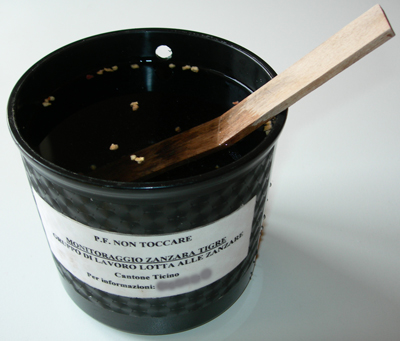Bacillus Thuringiensis Israelensis on:
[Wikipedia]
[Google]
[Amazon]
 ''Bacillus thuringiensis'' serotype ''israelensis'' (Bti) is a group of bacteria used as
''Bacillus thuringiensis'' serotype ''israelensis'' (Bti) is a group of bacteria used as
''Bacillus thuringiensis'' fact sheet
EPA Controlling Mosquitoes at the Larval Stage
thuringiensis israelensis Biological control agents of pest insects {{Bacilli-stub
 ''Bacillus thuringiensis'' serotype ''israelensis'' (Bti) is a group of bacteria used as
''Bacillus thuringiensis'' serotype ''israelensis'' (Bti) is a group of bacteria used as biological control
Biological control or biocontrol is a method of controlling pests, such as insects, mites, weeds, and plant diseases, using other organisms. It relies on predation, parasitism, herbivory, or other natural mechanisms, but typically also i ...
agents for larvae stages of certain dipterans. Bti produces toxins which are effective in killing various species of mosquitoes
Mosquitoes (or mosquitos) are members of a group of almost 3,600 species of small Diptera, flies within the family Culicidae (from the Latin ''culex'' meaning "gnat"). The word "mosquito" (formed by ''mosca'' and diminutive ''-ito'') is Spanish ...
, fungus gnats
Fungus gnats are small, dark, short-lived gnats, of the families Sciaridae, Diadocidiidae, Ditomyiidae, Keroplatidae, Bolitophilidae, and Mycetophilidae (order Diptera); they comprise six of the seven families placed in the superfamily Sciaroide ...
, and blackflies, while having almost no effect on other organisms. The major advantage of ''B. thuringiensis
''Bacillus thuringiensis'' (or Bt) is a gram-positive, soil-dwelling bacterium, the most commonly used biological pesticide worldwide. ''B. thuringiensis'' also occurs naturally in the gut of caterpillars of various types of moths and butterfl ...
'' products is that they are thought to affect few non-target species. However, even though Bti may have minimal direct effects on non-target organisms, it may potentially be associated with knock-on effects on food webs and other ecosystem properties, including biodiversity and ecosystem functioning.
Bti strains possess the pBtoxis plasmid which encodes numerous Cry (a δ-endotoxin
Delta endotoxins (δ-endotoxins) are pore-forming toxins produced by '' Bacillus thuringiensis'' species of bacteria. They are useful for their insecticidal action and are the primary toxin produced by Bt maize/corn. During spore formation ...
) and Cyt toxins, including Cry4, Cry10, Cry11, Cyt1, and Cyt2. The crystal aggregation which these toxins form contains at least four major toxic components, but the extent to which each Cry and Cyt protein is represented is not known and likely to vary with strain and formulation. Both Cry and Cyt proteins are pore-forming toxins
Pore-forming proteins (PFTs, also known as pore-forming toxins) are usually produced by bacteria, and include a number of protein exotoxins but may also be produced by other organisms such as apple snails that produce perivitellin-2 or earthwo ...
; they lyse midgut epithelial cells
Epithelium or epithelial tissue is one of the four basic types of animal tissue, along with connective tissue, muscle tissue and nervous tissue. It is a thin, continuous, protective layer of compactly packed cells with a little intercell ...
by inserting into the target cell membrane
The cell membrane (also known as the plasma membrane (PM) or cytoplasmic membrane, and historically referred to as the plasmalemma) is a biological membrane that separates and protects the interior of all cells from the outside environment ( ...
and forming pores.
Commercial formulations include "Mosquito Dunks" and "Mosquito Bits". It is also available in bulk liquid or granular formulations for commercial and public agency use.
Long name
''Bacillus thuringiensis'' subspecies ''israelensis'' strain EG2215See also
*Malaria
Malaria is a mosquito-borne infectious disease that affects humans and other animals. Malaria causes symptoms that typically include fever, tiredness, vomiting, and headaches. In severe cases, it can cause jaundice, seizures, coma, or death. S ...
References
External links
''Bacillus thuringiensis'' fact sheet
EPA Controlling Mosquitoes at the Larval Stage
thuringiensis israelensis Biological control agents of pest insects {{Bacilli-stub